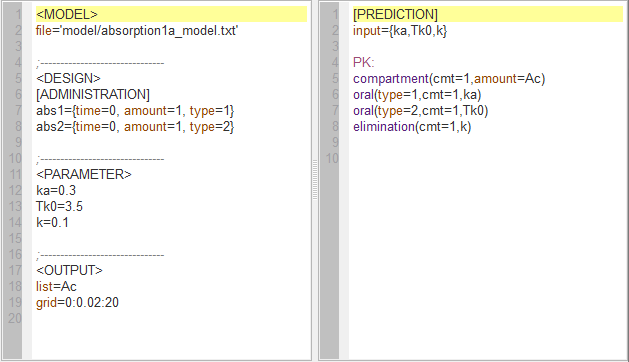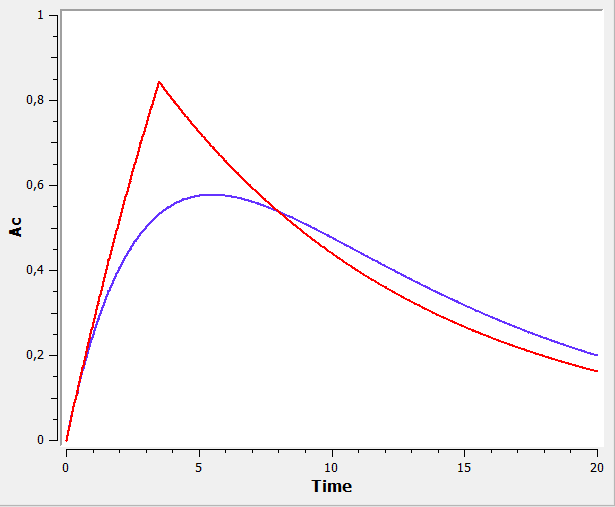Introduction to PK modeling using MLXPlore - Part I
Explore and visualize PK models with $\mlxplore$ - Part I
Introduction
This is an introductory tutorial for describing and visualizing simple and more complex pharmacokinetic (PK) models.
We will present several PK model examples and visualize the processes of absorption, distribution and elimination that characterize them.
We will suppose in all these examples that a single dose is administered at time t=0. In each example, the modeling goal is defined. Then, the model and requests for graphical outputs are coded in MLXPlore, a new graphical and interactive software for the exploration and visualization of complex pharmacometric models. MLXPlore uses the easy and intuitive MLXtran model coding language, popularized by the Monolix software.
MLXPlore is used here for computing the predicted amount in the central compartment. We further display in [[ Explore and visualize PK models with $\mlxplore$ - Part II | Part II]] the predicted amount in the depot compartment and the MLXPlore project that was used for computing it.
Absorption
1) First-order and zero-order absorption
{{{1}}} this computes and displays the amount (Ac) in the central compartment when the drug is absorbed with a first-order or zero-order absorption process.
Left: In the right-hand side window, the two (first-order and zero-order) models are described using the MLXtran coding language. In the left-hand side window, the structural model, experimental design, parameters and requested graphical output are defined.
Right: The graphical output of MLXPlore, which was told to output the amount Ac in the central compartment with respect to time for zero-order (red) and first-order (blue) absorption.
See the [[ Explore and visualize PK models with $\mlxplore$ - Part II | Part II]] for the corresponding amounts in the depot compartment and the related $\mlxplore$ project.
2) First-order, zero-order and $\alpha$-order absorption
{{{1}}} we compute and display the amounts in the central and depot compartments when the drug is transferred from the depot to the central compartment with a first-order, zero-order or $\alpha$-order absorption process.
Note $\dot{A}d(t) \, = \, -ka \, Ad^{\alpha}(t).$ Zero-order absorption is obtained with $\alpha=0$ and first-order absorption with $\alpha=1$. The grren curves are with respect to the -\alpha|-order absorption process.
See the [[ Explore and visualize PK models with $\mlxplore$ - Part II | Part II]] for the corresponding amounts in the depot compartment and the related $\mlxplore$ project.
3) First-order, zero-order and sequential zero-order/first-order absorption
{{{1}}} we compute and display the amount in the central compartment when the drug is transferred from the depot to the central compartment with a first-order, zero-order or sequential zero-order/first-order absorption process. Here, $r0$ is the absorption rate for the zero-order process and $F0$ the fraction of the dose absorbed in a zero-order process. The green curves refer to the sequential zero-order/first-order absorption process.
See the [[ Explore and visualize PK models with $\mlxplore$ - Part II | Part II]] for the corresponding amounts in the depot compartment and the related $\mlxplore$ project.
4) First-order and saturated absorption
absorption4_script: we compute and display the amount in the central compartment when the drug is transferred from the depot to the central compartment with a first-order or saturated (Michaelis-Mentens) absorption process.

